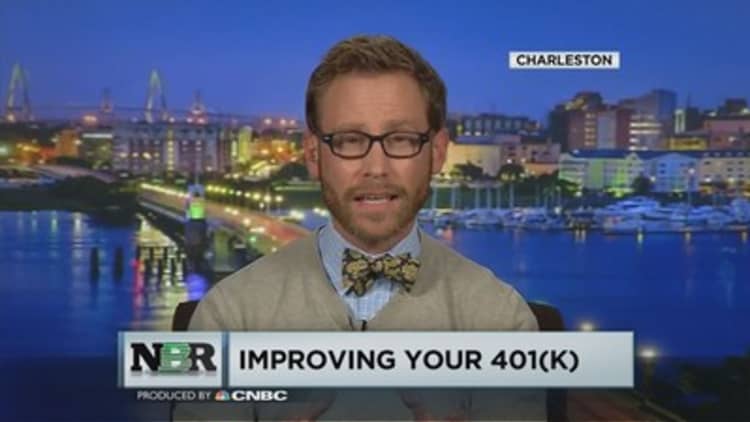Two recent court decisions serve as a good reminder that just because your 401(k) plan provider is likely scrutinizing its fees these days, it's under no obligation to offer you the lowest-cost investments available.
Late last month, Putnam Investments prevailed over an allegation that it was loading its employee retirement plan with its own funds instead of external ones, costing participants millions of dollars. The ruling came on the heels of a similar result in a case against Wells Fargo.
In each case, the judge rejected the argument that the companies' fees were too high because lower-cost alternatives were available at Vanguard, the index-fund giant.
The rulings confirm that the costs "of actively managed mutual funds and index funds are different, and that the differences can be justifiable," said Fred Reish, a partner at law firm Drinker Biddle & Reath.
Fees charged to 401(k) plan participants have been in legal crosshairs for years. A 2015 Supreme Court decision, which basically said workers can sue their employers for failing to monitor unnecessarily high fees in their plans, contributed to the surge in lawsuits.
Although the details differ among the cases, the cumulative effect has been downward pressure on the fees that workers pay inside their retirement accounts. The average total cost of a 401(k) plan was 0.97 percent of assets in 2014, down from 1.02 percent in 2009, according to a 2016 study released by Brightscope and the Investment Company Institute.
They should be using a benchmark, but Vanguard isn't necessarily the right one to use. That's comparing apples and oranges.Marcia Wagnerpresident and founder of Wagner Law Group
While the focus of the Putnam and Wells Fargo suits was about using their own funds — called "self-dealing" in industry parlance — the significance of rejecting the Vanguard argument suggests that as long as plans can justify higher fees, they'll be within their legal right to do so.
In each case, the judge pointed out that fiduciaries are not required to find the cheapest available funds, which could be saddled with other issues.
"They should be using a benchmark, but Vanguard isn't necessarily the right one to use," said Marcia Wagner, president and founder of Wagner Law Group. "That's comparing apples and oranges."

Actively managed funds, which have professionals picking the investments, typically come with higher costs than index funds, which require no such expertise because they track an index, such as the Standard & Poor's 500.
Despite these court rulings, a dozen or so similar cases against investment managers — involving well-known companies like American Century and Edward Jones — are pending or have continued moving through the court system.
Just last week, MFS Investment Management became the latest firm to face allegations. In that case, the plaintiff claims that using expensive in-house funds cost its participants "tens of millions of dollars" due to high fees and poor returns.
"We stand firmly behind the investments offerings in our employee retirement plans and process in selecting these options," MFS spokesman Daniel Flaherty said in a statement.
Some cases have ended with a settlement. American Airlines recently agreed to settle a similar suit for $22 million. In that case, plaintiffs claimed the company profited at plan participants' expense by using high-cost funds offered by an affiliated investment manager. And in May, TIAA-CREF agreed to pay $5 million in a suit involving charges of self-dealing that led to overpaying in administrative and investment management fees.
Plans are now saying they're looking more at giving access to advice and providing guidance so [workers] can be better allocated in their portfolios and better savers."Joe Readydirector, Wells Fargo Institutional Retirement and Trust
While retirement savers have been the beneficiary of lower costs, some observers think focusing solely on fees misses part of the retirement-preparation equation.
Joe Ready, director of Wells Fargo Institutional Retirement and Trust, said that more companies are thinking about the full value they should deliver to 401(k) plan participants, not just their fees.
"Plans are now saying they're looking more at giving access to advice and providing guidance so [workers] can be better allocated in their portfolios and better savers," Ready said.
A company that saves a participant $10 a month on a reduced investment cost could either return it to the worker's account or use part of it to improve employees' understanding of their investment choices, he said.
"You could argue that asset allocation would improve their outcome more and that's where the [money] would be better spent," Ready said. "There has to be a balanced equation driven by outcome, not just a cost discussion."
Workers who pay the highest fees tend to be in smaller plans. Fees for large retirement plans (1,000 participants and $50 million in assets) has edged down slightly to 0.96 percent from 0.97 percent a year ago, according to data in the most recent edition of the 401(k) Averages Book. The average cost for a small plan (100 participants and $5 million in assets) declined to 1.25 percent from 1.28 percent over the past year.
"There are fewer assets to spread the costs around in the smaller plans," said Joe Valletta, co-editor of the book.
Valletta's data also show that investment management fees represent the bulk of a 401(k) costs, making it the area with the most room for improvement.
The upshot of the litigation, Wagner said, will be investment managers using better standards for adhering to their fiduciary duty, part of which is cost.
"Looking at fees is going to continue and eventually reach into the entire wealth management area," Wagner said.


